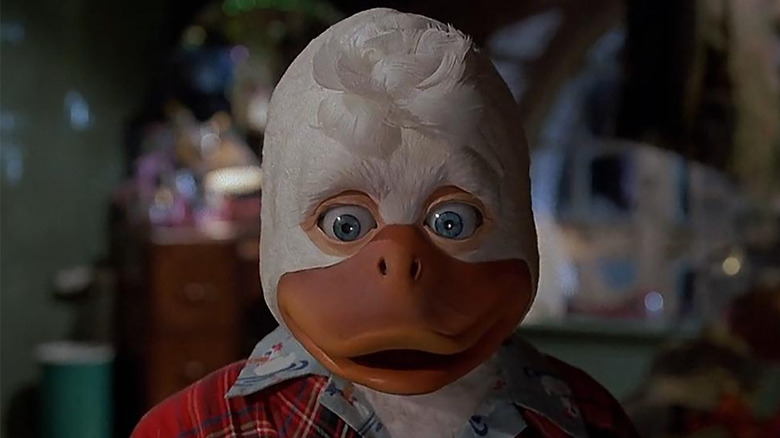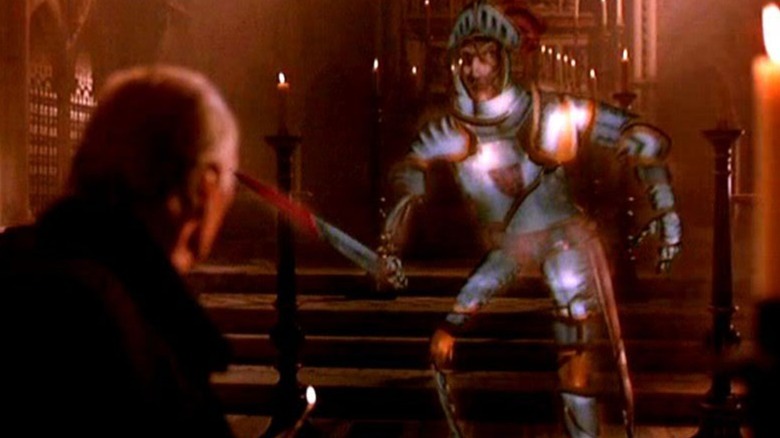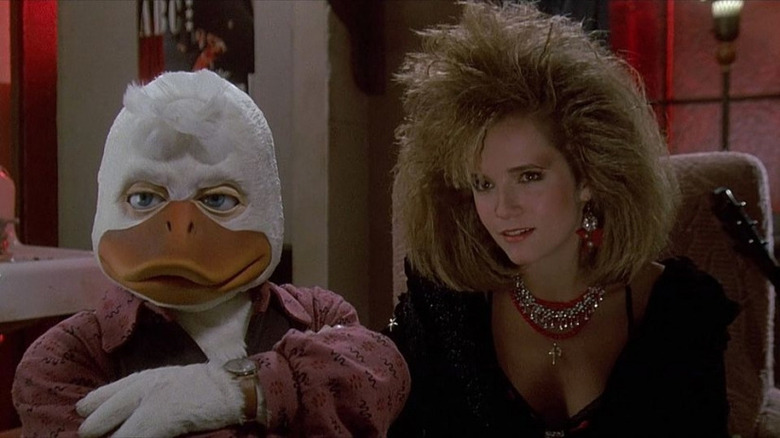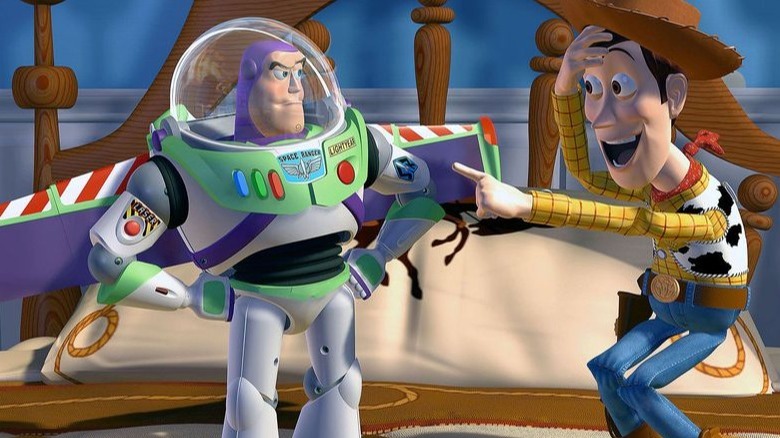How George Lucas' Howard The Duck Led To Toy Story
Few creative personalities dominated the popular sensibilities of the '80's like George Lucas. From "Star Wars" to the "Indiana Jones" series, Lucas built his brand on a particular synthesis of nostalgic properties and modern effects work. So it only makes sense that "Howard the Duck," a Marvel comics series that originated in the early '70's naturally appealed to him as a property just as Lucas' career was picking up steam with "American Graffiti."
Written by Steve Gerber and drawn by Val Mayerik, the comic contained an absurd satire on modern life and parodies of the pulpy noir films that Lucas grew up with, and that made it ripe for an adaptation by Lucas. Unfortunately, its long, gnarled route to completion led to a movie that's more of a punchline than a cultural touchstone, but it did play something of an unintentional role in the rise of Pixar Animation.
Of all the movie's problems, few can beat the duck himself — a notoriously grotesque costume on dwarf actor Ed Gale. Howard's creepy plastic eyes played particularly bad with the perpetual inexpressive grin at his beak. However, Howard was never meant to be physically on set. Instead, the duck was originally going to be a computer generated character brought to life by Lucas' visual effects company, Industrial Light & Magic.
The dawn of CGI VFX
ILM was foundational to the success of George Lucas, who sought to bring a new grammar for visual effects to the fold while working on "Star Wars." By founding and investing in an effects house and turning it into a subsidiary of Lucasfilm, he was able to play a direct role in incredible innovations behind the scenes. Stunning new kinds of effects and milestones in visual technology throughout the next several decades could only be possible with the work of founder John Dykstra and many other contributors. In fact, the relationship between Lucas and ILM is so inextricable that it's set to form the basis of a documentary series.
After the success of "Star Wars," Lucas attempted to focus more specifically on computer generated effects, leading to the formation of The Graphics Group. This unit of creators in ILM, working from Apple and SGI computers, worked for years to pioneer new effects. This journey culminated in the creation of the Stained Glass Man, a wholly computer-generated character in 1985's "Young Sherlock Holmes" (seen above). Many of the men who comprised the group, like Ed Catmull, Alvy Ray Smith, and John Lasseter, would go on to found Pixar, a portmanteau for "picture maker," named after a device they'd developed.
From animation to duck suit
"Howard the Duck" saw many issues over the long arc of its production. When talks began to turn it into a film, it was going to be an animated piece, based on a particular comic story called "Duckworld" from "Howard the Duck" #6. Besides the costs involved in creating an animated film, Lucas' arrangement with Universal meant the film would need to be live-action, so that it could be the distributor's big summer movie of 1986. An animated film might have cost more money and taken more time, but it also could have done justice to the funky, inverted-Donald-Duck style artwork crafted by Mayerik.
Even after plans to develop an animated film were shelved, the studio kept working to make Howard a fully animated CGI character, according to the movie's co-writer Gloria Katz in an oral history on the making of the movie. This could have been the best of both worlds, something that brought together Mayerik's Howard design, the work of production designer Peter Jamison, and the vision of director of photography Richard Kline, whose work in the Duckworld sequence of the movie is phenomenal. It's probable the technology wasn't there yet for a fully CG character to take the lead on a movie. As is, we were left with Ed Gale in a duck suit, which even Lucas claimed wouldn't work.
The rise of Pixar
With Lucas' star being as immense as it was, many actors and stand-up comedians sought the voice role, including Robin Williams, but few could have brought Howard to life against the movie's bizarre, grimy backdrops. Besides that, the movie was already deep into post-production, and Williams left when he was forced to match his performance to the finished film. Actor Chip Zien took the role instead, lending the duck a nasal sneering voice that was actually perfect.
Whether it was how Howard looked or the nonsensical quality of the material, which waters down the edge of the original comic while still missing the mark on being kid-friendly, "Howard the Duck" ended up a major box office failure, barely making back its original budget. The money sink of the movie, and its inability to create the necessary CGI, led Lucasfilm to offload the Graphics Group onto Steve Jobs in 1986 for an offer of $5 million, and that mix of computer scientists and animators would become Pixar. By creating the first fully computer animated movie with "Toy Story" in 1995, Pixar's major accomplishment more than made up for whatever failures their parent company underwent nearly a decade before. Since then, even "Howard the Duck" found in its low-rent strangeness a cult fanbase that loves it dearly.



